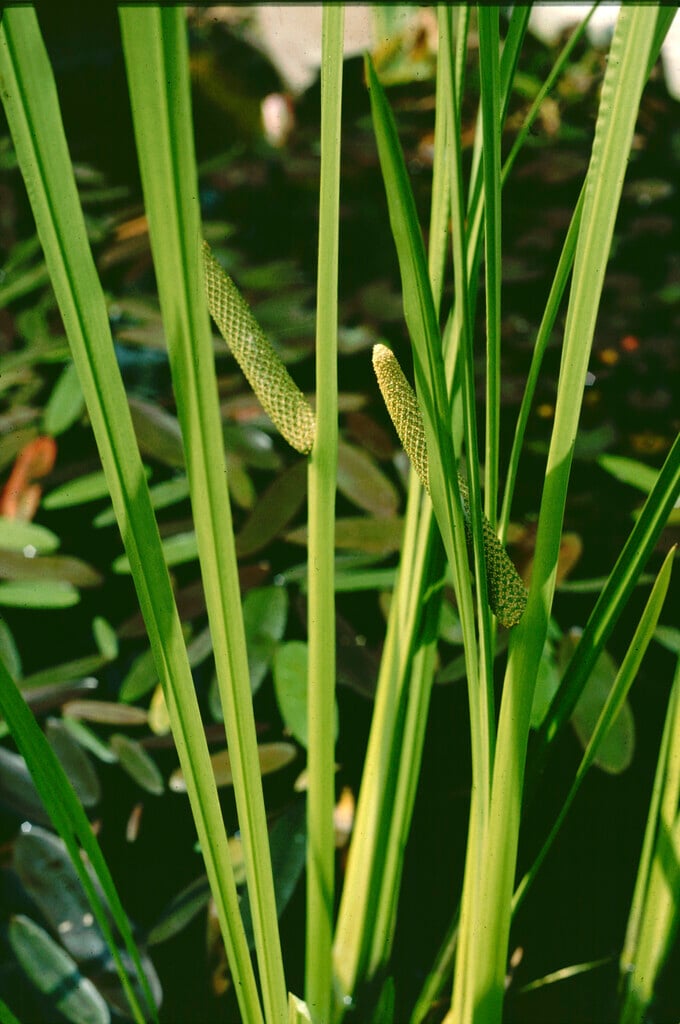Acorus calamus
sweet flag
Spreading, deciduous, marginal aquatic perennial 60-90cm in height, with strap-shaped, aromatic bright green leaves. Insignificant brown flowers to 7cm long are produced just below the tips of the leaf-like flower stems in midsummer
Other common names
beewortcalamus
see morecinnamon sedge
flagroot
myrtle flag
myrtle grass
myrtle sedge
sea sedge
sedge grass
sweet calamus
sweet myrtle
sweet sedge
water iris

Buy this plant
Size
Ultimate height
0.5–1 metresTime to ultimate height
2–5 yearsUltimate spread
0.5–1 metresGrowing conditions
Moisture
Moist but well–drained, Poorly–drainedpH
Acid, Alkaline, NeutralColour & scent
| Stem | Flower | Foliage | Fruit | |
| Spring | Green | |||
|---|---|---|---|---|
| Summer | Brown | Green | ||
| Autumn | Green | |||
| Winter |
Position
- Full sun
Aspect
South–facing or West–facing
Exposure
Exposed or Sheltered Hardiness
H7Botanical details
- Family
- Acoraceae
- Native to GB / Ireland
- No
- Foliage
- Deciduous
- Habit
- Clump forming
- Genus
Acorus are deciduous or semi-evergreen, moisture-loving rhizomatous perennials forming tufts of linear or sword-shaped leaves, with insignificant spike-like flowers borne near the tips of central leaf-like stems
- Name status
Correct
How to grow
Cultivation
Grow at pond margins in very moist or wet soils in full sun. Grows best in water no deeper than 22cm. Divide every few years to prevent congestion, See bog gardening, pond plants and Ornamental grasses cultivation
Propagation
Propagate by rhizome division at the beginning of the growing season. Pot up and plant out only when fully established
Suggested planting locations and garden types
- Cottage and informal garden
Pruning
Cut back after flowering
Pests
Generally pest-free
Diseases
Generally disease-free
Get involved
The Royal Horticultural Society is the UK’s leading gardening charity. We aim to enrich everyone’s life through plants, and make the UK a greener and more beautiful place.